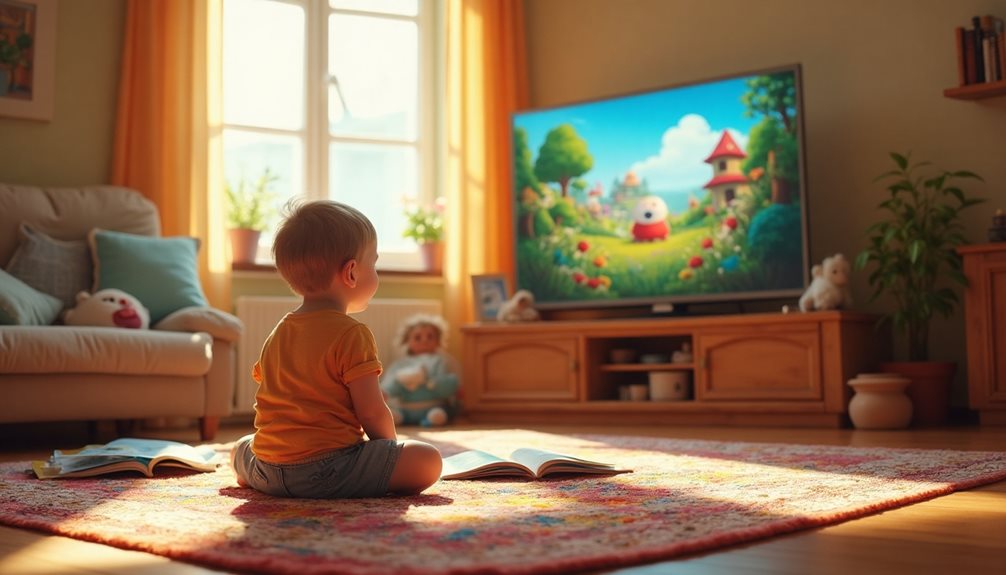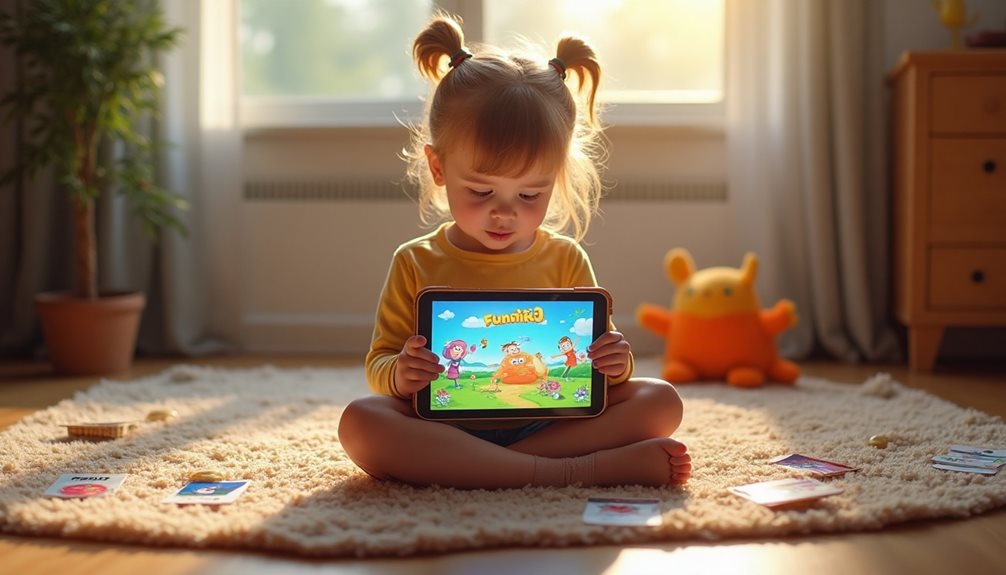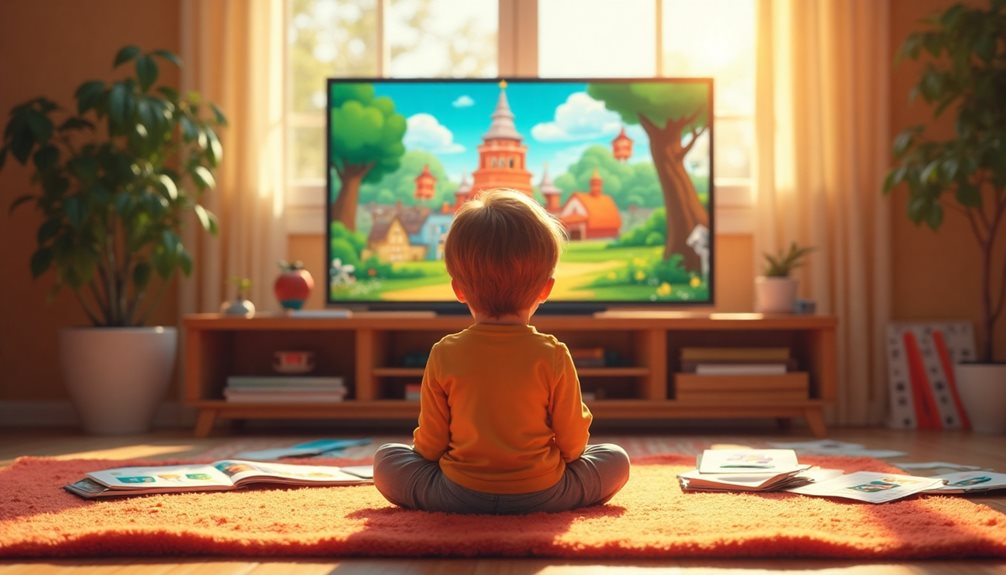Learning Russian through cartoons is one of the most enjoyable and effective ways to build vocabulary and listening skills quickly. Cartoons use simple language, repetitive phrases, and vivid visuals, making them perfect for beginners. Familiar storylines and relatable characters help maintain interest while reinforcing natural speech patterns. Popular series like Маша и Медведь show how everyday Russian is embedded in entertaining content, turning language study from a task into a daily habit.
Table of Contents
ToggleWhy Cartoons Are an Effective Tool for Learning Russian

Traditional language learning methods often focus on rote memorization and repetitive drills, which can sometimes feel tedious and disconnected from real-life use. In contrast, cartoons offer a lively and engaging way to learn a new language by combining storytelling, visuals, and audio in a way that naturally supports comprehension and retention. For learners of Russian, cartoons provide a unique opportunity to hear the language spoken in a variety of everyday contexts, helping to build listening skills while reinforcing vocabulary and grammar.
One of the key advantages of cartoons is their ability to present language in meaningful and memorable situations. Instead of isolated words or rules, learners encounter phrases and sentences embedded within stories that capture attention and make it easier to remember. The visual cues that accompany dialogue also help learners infer meaning without needing constant translation, encouraging a more intuitive grasp of the language.
Moreover, cartoons often reflect cultural elements such as traditions, humor, and social interactions. This cultural context deepens understanding and makes the learning experience more relevant and interesting. By watching cartoons, learners get a glimpse into Russian life and customs, which enhances motivation and helps build a more authentic connection to the language.
Overall, cartoons combine entertainment with education in a way that supports active learning and keeps learners motivated. This makes them an ideal resource for those beginning their journey with Russian or aiming to improve their skills in a fun and effective manner.
Benefits of Children’s Media for Russian Beginners
Children’s media, including cartoons, songs, and simple stories, offers distinct advantages for beginners learning Russian. Unlike more complex content, children’s media uses clear, straightforward language with simple sentence structures and repetitive phrases. This repetition helps learners absorb new vocabulary and grammar naturally, similar to how children acquire their first language.
The visual aspect of children’s media plays a crucial role in reinforcing learning. Bright colors, lively animations, and expressive characters provide strong contextual clues that help learners connect words to meanings without relying heavily on translation. This approach supports visual memory and makes the learning process more intuitive and enjoyable.
Beyond language skills, children’s media introduces learners to Russian culture in an accessible way. These programs often depict everyday life, social customs, humor, and interactions that textbooks may not cover. This cultural exposure enriches the learning experience and helps learners develop a more authentic understanding of the language’s use in real situations.
By offering a fun, low-pressure environment, children’s media encourages regular practice and reduces the anxiety that can come with language learning. For beginners starting their journey with Russian, this combination of simplicity, visual support, and cultural insight makes children’s media an especially effective resource.
Top Russian Cartoons for Language Learners: Tips and Recommendations
Watching Russian cartoons is a fantastic way to improve your language skills. They combine engaging stories, clear dialogue, and cultural insights, helping you absorb vocabulary and grammar naturally. Here’s a guide to some of the best Russian cartoons for learners, along with tips on how to use them effectively.
Why Russian Cartoons Are Great for Learners
Russian cartoons are an excellent resource for language learners because they combine education with entertainment in a way that makes acquiring the language both effective and enjoyable. Here are several reasons why Russian cartoons stand out as a learning tool, along with some key Russian vocabulary related to the topic.
Clear and Simple Language
Many Russian cartoons are created with children in mind, which means they use clear, simple vocabulary and straightforward sentence structures. This makes them ideal for beginners and intermediate learners who might find native-level conversations overwhelming. For example, words like простой (prostoy) meaning “simple” and понятный (ponyatnyy) meaning “clear” describe the language style used. The repetition of basic phrases helps solidify foundational grammar and vocabulary, making it easier to build competence step by step.
Engaging Visuals
The visual nature of cartoons plays a crucial role in comprehension. Since animation links words directly to actions and objects, learners can infer meaning without relying heavily on a dictionary. This contextual learning is very effective because it mimics how children learn language naturally—by associating words with what they see. Words such as анимация (animatsiya) for “animation” and визуальный (vizual’nyy) for “visual” highlight this aspect. For instance, if a character says бежать (bezhat’) meaning “to run,” the learner immediately sees the action, reinforcing understanding.
Cultural Insights
Russian cartoons often include references to traditions, holidays, social behaviors, and everyday life in Russia. This cultural context is invaluable for learners who want to go beyond vocabulary and grammar to truly understand how the language is used in real-life situations. For example, cartoons might depict celebrations like Новый год (Novyy god) — New Year, or show typical Russian foods like борщ (borshch) — beet soup. Such cultural immersion helps learners grasp nuances and idiomatic expressions that textbooks might not cover.
Repetition and Interaction
One of the strengths of cartoons is the natural repetition of common phrases, idioms, and expressions. Characters often repeat greetings like Привет! (Privet!) — “Hi!” or phrases like Как дела? (Kak dela?) — “How are you?” This repetition aids memorization and makes it easier to recall these expressions in real conversations. The interaction between characters also encourages learners to anticipate responses and practice conversational flow.
Natural Conversation Practice
Dialogues in cartoons mimic everyday interactions, ranging from casual chats to problem-solving discussions. This exposure helps learners become familiar with informal speech patterns, question forms, and common responses. For example, hearing phrases like Что это? (Chto eto?) — “What is this?” or Давай играть! (Davay igrat’!) — “Let’s play!” prepares learners for practical communication. This kind of listening practice is essential for developing a natural feel for the rhythm and intonation of Russian speech.
By combining clear language, visual context, cultural depth, repetition, and natural dialogue, Russian cartoons provide a rich environment for language learning that goes beyond rote memorization. They make the process engaging and meaningful, allowing learners to absorb language in a way that feels intuitive.
Key Russian words and phrases related to learning from cartoons include:
- простой язык (prostoy yazyk) — simple language
- понимание (ponimaniye) — comprehension
- культура (kultura) — culture
- повторение (povtoreniye) — repetition
- разговор (razgovor) — conversation
- фраза (fraza) — phrase
- диалог (dialog) — dialogue
- мультфильм (multfilm) — cartoon/animated film
Using cartoons as a learning tool not only improves language skills but also deepens appreciation of Russian culture and everyday life.
Recommended Russian Cartoons for Learners
1. Маша и Медведь (Masha and the Bear)
Why watch:
“Masha and the Bear” is one of the most popular Russian cartoons internationally. It features simple yet rich storytelling with clear dialogue that’s great for beginners.
Features for learners:
- Masha’s lively curiosity contrasts with the Bear’s calm personality, providing varied speech styles and emotional tones.
- Episodes include cultural references such as Russian holidays and daily customs, enriching your understanding of Russian culture.
- Vocabulary ranges from everyday words to idiomatic expressions, perfect for expanding your lexicon naturally.
Tips:
- Try watching episodes with Russian subtitles for better word recognition.
- Pause and repeat short segments to practice pronunciation and intonation.
- Note down recurring phrases or expressions Masha uses.
2. Смешарики (Smeshariki)
Why watch:
“Smeshariki” is known for its humor, life lessons, and simple language, appealing to both children and adult learners.
Features for learners:
- Characters have distinct personalities, making dialogue memorable.
- Uses everyday vocabulary and expressions relevant to daily conversations.
- The humor and relatable situations help with retention of phrases and cultural context.
Tips:
- Focus on episodes that showcase social interactions to learn useful conversational phrases.
- Use the show to improve listening comprehension by following the flow of dialogue without subtitles first, then with subtitles if needed.
- Discuss episodes with other learners or write summaries to reinforce new vocabulary.
3. Лунтик (Luntik)
Why watch:
“Luntik” features gentle, curious characters living in a colorful world, using simple language ideal for beginners.
Features for learners:
- Clear pronunciation and slow speech make it easier to catch words.
- Repetitive and friendly dialogues introduce common phrases and sentence structures gradually.
- The show covers everyday topics which build practical vocabulary.
Tips:
- Watch episodes multiple times to reinforce new words and phrases.
- Mimic the characters’ speech aloud to practice speaking and intonation.
- Use Luntik as a relaxed way to bridge language learning with cultural understanding.
How to Use Cartoons Effectively for Language Learning

Using cartoons for language learning is a smart and enjoyable approach, especially for beginners and intermediate learners. Cartoons combine visual storytelling with spoken language, making it easier to understand context, emotions, and cultural nuances. Here’s a detailed guide on how to use cartoons effectively to learn Russian, with useful Russian words and phrases included.
Start with Subtitles
Beginning with subtitles is crucial for comprehension. Start by watching cartoons with subtitles in your native language (for example, English). This helps you follow the story while getting used to the sounds of Russian.
Next, switch to Russian subtitles (русские субтитры [roos-kee-ye soo-bee-tee-tree]) so you can associate spoken words with their written forms. This step is important because Russian uses the Cyrillic alphabet (кириллица [kee-ree-LEE-tsa]), which looks very different from the Latin alphabet. Seeing the words helps you recognize letters and sounds together.
Eventually, try to watch without any subtitles at all (без субтитров [byez soo-bee-TTROV]) for full immersion. This forces your brain to rely on listening skills and context clues.
Keep a Vocabulary Notebook
Write down new words (слова [sloh-VA]) and example sentences (примерные предложения [pree-MYER-ny-ye pree-dloh-ZHEH-nee-ya]) from each episode or cartoon segment. This active note-taking helps you remember vocabulary better than passive watching.
You can organize your notebook by themes or characters, for example:
- Words related to emotions: радость (joy), грусть (sadness), удивление (surprise)
- Everyday objects: дом (house), машина (car), книга (book)
Review your notebook regularly to strengthen memory. When you see the word again in a cartoon, you’ll recall its meaning faster.
Repeat Phrases Aloud
A very effective way to improve your speaking is shadowing—repeating aloud what the characters say immediately after hearing it. This practice improves your pronunciation (произношение [pro-eez-noh-SHEH-nee-ye]), intonation (интонация [een-toh-NAH-tsee-ya]), and fluency (беглость речи [BYE-glost’ REH-chee]).
For example, if a character says:
Привет! Как дела?
[Pri-VYET! Kak dye-LA?] meaning “Hi! How are you?”
Repeat it aloud, trying to match their speed and tone.
This turns passive listening into active speaking and builds muscle memory for Russian sounds.
![]()
Engage Socially
Discussing cartoons with other learners or teachers deepens your understanding and keeps motivation high. You can:
- Share summaries (резюме или краткое содержание [krah-TKOH-ye sod-er-ZHAH-nye]) of episodes
- Talk about favorite characters or funny moments
- Compare how different people interpret cultural references
Social interaction encourages active use of new vocabulary and grammar.
How Cartoons Build Listening Skills and Cultural Understanding
Cartoons expose learners to natural speech patterns, including intonation, rhythm, and conversational flow. Russian intonation can differ greatly from English, so hearing native speakers in animated dialogues helps tune your ear to these differences.
For example, Russian questions often have rising intonation at the end, but sometimes intonation patterns vary depending on emotion or emphasis. Cartoons demonstrate these subtleties clearly through voice acting.
Cultural references in cartoons introduce you to Russian humor, traditions, holidays, and social norms that textbooks rarely cover in detail. For instance:
- Праздник Масленица (Prazdnik Maslenitsa) — a traditional Russian festival with pancakes and festivities
- Common jokes or idioms like делать из мухи слона (delat’ iz mukhi slona) — literally “to make an elephant out of a fly,” meaning to exaggerate
Understanding these cultural elements helps you grasp the language’s deeper meanings and use expressions appropriately in conversation.
By actively engaging with cartoons—repeating dialogues or mimicking expressions—you enhance vocabulary retention and listening comprehension. The visual context makes words easier to remember because you connect language with images and actions.
Key Russian Words & Phrases Related to Learning with Cartoons
- Мультфильм (moolt-FEELM) — cartoon
- субтитры (soo-bee-TTIR-ee) — subtitles
- произношение (pro-eez-noh-SHEH-nee-ye) — pronunciation
- интонация (een-toh-NAH-tsee-ya) — intonation
- словарный запас (sloh-VAR-ny zah-PAS) — vocabulary
- повторять вслух (pohv-tah-RYAT’ vs-looh) — repeat aloud
- понимать на слух (pah-nee-MAHT’ nah slookh) — understand by ear/listening comprehension
- культурные особенности (kool’-TOOR-nye ahb-ee-SOHN-nosti) — cultural features
- диалог (dee-ah-LOHG) — dialogue
Using cartoons as part of your Russian learning routine offers a natural, engaging way to develop listening skills and cultural knowledge while having fun. Make sure to actively participate—don’t just watch passively—to get the most benefit from this method.
![]()
Final Tips for Success in Learning Russian Through Cartoons

Learning Russian by watching cartoons is a fun and effective method, but to get the most out of it, following a thoughtful approach can make all the difference. Here are some detailed tips and insights to help you succeed:
1. Watch with subtitles first, then without
Start by watching cartoons with Russian subtitles or your native language subtitles. This helps you connect the sounds you hear with the written words and their meanings. For example, seeing the word “Привет” (Privet – “Hello”) while hearing it spoken helps your brain link sound and meaning. After a few viewings, try watching without subtitles to challenge your listening skills.
- The word субтитры (subtitry) means “subtitles.”
- This method uses a gradual transition known as пошаговое обучение (poshagovoe obucheniye) — step-by-step learning.
2. Repeat common phrases aloud
Mimicking what you hear is very useful for improving pronunciation and speaking confidence. Russian pronunciation has sounds not common in English, like the rolled “р” in говорить (govorit’ – “to speak”). Repeating phrases helps train your mouth muscles.
Here are some useful phrases to practice:
- Как дела? (Kak dela?) — “How are you?”
- Спасибо! (Spasibo!) — “Thank you!”
- До свидания! (Do svidaniya!) — “Goodbye!”
Say these aloud multiple times to get comfortable with rhythm and intonation.
3. Keep a vocabulary notebook
Writing down new words you hear turns passive watching into active learning. When you write, you engage your memory more deeply. Include Russian words, their English meanings, and pronunciation hints.
For example, if you hear игра (igra – “game”), write:
- игра (igra) – game [ee-GRA]
- Example: Я люблю играть в игры. (Ya lyublyu igrat’ v igry.) — I love to play games.
You can also note expressions or slang from cartoons, which often show real, everyday Russian.
4. Make cartoon-watching a daily mini-lesson
Consistency is key in language learning. Watching cartoons daily—even just 10-15 minutes—creates a habit that feels enjoyable rather than like homework. This daily exposure builds your vocabulary and listening skills steadily over time without stress.
Other benefits include:
- Improving понимание на слух (ponimaniye na slukh) — listening comprehension.
- Learning интонация (intonatsiya) — intonation and natural speech patterns.
- Gaining insight into Russian culture (культура) and humor through character interactions.
Additional Tips
- Pause and rewind scenes with tricky words or fast speech.
- Use online dictionaries or apps to check unfamiliar words.
- Try shadowing: listen to short sentences and immediately repeat them aloud.
- Join language forums or groups to share favorite cartoons and discuss new phrases.
By turning cartoon-watching into a daily habit using these strategies, you’ll enjoy learning Russian while naturally improving your vocabulary (словарь), pronunciation (произношение), listening skills (аудирование), and cultural understanding (культурное понимание). This approach makes learning feel like fun rather than work, which is often the best way to keep motivated and progress steadily.
![]()
Make Learning Russian Fun and Effective with Cartoons!
Watching Russian cartoons is more than just entertainment—it’s a powerful way to learn the language naturally and enjoyably. By immersing yourself in colorful stories, clear speech, and cultural moments, you build vocabulary, improve listening skills, and get a real sense of how Russian is spoken every day. Remember to combine active techniques like using subtitles, repeating phrases aloud, and keeping a vocabulary notebook to turn passive watching into active learning.
With regular practice and the right mindset, cartoons transform from simple shows into your personal Russian teachers. So grab your favorite Russian мультфильм, press play, and watch your language skills grow—one fun episode at a time!
![]()
Frequently Asked Questions
![]()
1. Why are cartoons effective for learning Russian vocabulary?
Cartoons use simple language, repetitive phrases, and clear visuals that help beginners understand and remember new words easily. The combination of hearing the language and seeing related actions or objects makes it easier to connect meaning without needing constant translation.
![]()
2. How can I improve my listening skills using Russian cartoons?
Start by watching cartoons with subtitles in your native language, then switch to Russian subtitles to connect spoken and written words. Eventually, watch without subtitles to challenge your understanding. Repeating phrases aloud after characters (shadowing) also improves pronunciation and listening comprehension.
![]()
3. Which features of children’s cartoons make them suitable for Russian learners?
Children’s cartoons use clear pronunciation, slow and simple speech, and repetitive dialogues. They often include everyday vocabulary and cultural elements, which help learners understand real-life language use and build practical vocabulary.
![]()
4. How should I keep track of new words and phrases from cartoons?
Keep a dedicated notebook where you write down new words, their meanings, pronunciation tips, and example sentences. Organize your notes by themes or episodes to review regularly. This active practice helps strengthen memory and recall when you hear the words again.
![]()
5. What are some tips to make cartoon watching a successful language learning habit?
Watch daily for 10-15 minutes to build consistency. Use subtitles strategically, pause to repeat phrases aloud, and rewind difficult parts. Engage socially by discussing episodes or summarizing them in Russian to deepen your understanding and motivation.



